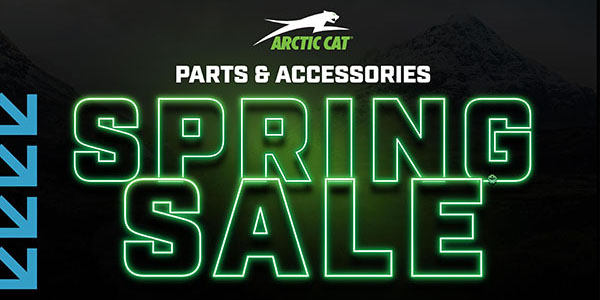Wham! I heard a pair of powerful hands slam the seminar table while a simultaneous "sheesh" spewed from this workshop participant’s lips like an old-time locomotive pulling into an undesirable station. This was followed immediately by what sounded like a Popeye-the-Sailor-Man-like tapestry of profanity. I get this a lot.
See, for the last 25 years I’ve been a bit of a contrarian. I’m interested in what’s possible, not what’s been done. My philosophy is not to stick my toe in the water but rather to make waves. As part of this position, I’m used to the groan that often occurs with the unveiling of a new concept. It’s a groan that includes equal measures of, "You don’t understand my customers," "That will never work here," and "That sounds like a lot of work, you don’t have any idea how busy I am."
I was fully prepared for the usual intellectual jousting when I heard the disturbance described above. What I wasn’t prepared for was Dan Lambert, operations director for Scott Fischer’s Ft. Myers Harley-Davidson.
"This is exactly the idea we’ve been looking for!" Dan exclaimed. And instead of hearing the sound of initiative and entrepreneurial spirit being sucked out of the room, suddenly the room was charged with the electricity of possibility. What was the idea?
The service manager or service writer should perform the final delivery (walk around) of the motorcycle with the customer (insert record scratch here).
This does several things:
- It gets the service department off on a positive note with this customer. They aren’t meeting service for the first time when they have an issue or a problem.
- It gives the customer better, more thorough information about the motorcycle.
- Customers leave with properly adjusted controls — salespeople and wrenches don’t mix!
- It makes the customer’s last contact on their first visit their first point of contact on their second visit.
- It allows the salesperson to get back on the floor and back to selling motorcycles.
Immediately after I make this point, Dan Lambert takes this idea and starts building on the concept with the intensity of JFK delivering his "Ask not what your country can do for you" inaugural address.
"What we’re going to do is not just have the service manager do this, but we will have the techs do it as well, and it won’t be a punishment. We’ll make it a privilege so they have to earn it. This is exactly the idea we’ve been looking for," grinned Lambert.
And presto, we have the thing that really twists my grips: innovation. Before you throw out the "you haven’t met my techs" penalty flag and send me straight to jail without passing go or collecting $200, read a little further and see how Dan made this idea work.
The first thing Dan did was to take this idea to his staff as exactly that, an idea. During his next service meeting, Dan ran through the idea of having the service department handle customer deliveries. He went through the pros and cons and laid out how much service techs would be able to bill for their time.
Then he did one of the most powerful things you can do when rolling out change or a new idea: He asked for volunteers. Simply by presenting it as an idea and asking for volunteers, he was able to obtain employee buy-in and their involvement in building and administering the process. This goes a long way to eliminating the dreaded dealership pushback we’ve all seen derail far too many ideas.
Now that Dan had some buy-in and some techs that were invested in the process, he spent some time working to improve their people skills. He focused on helping them to see that this was larger than billing out a half-hour of time. The techs immediately came to appreciate this system as an opportunity to build their own loyal customer base by providing the customer with their card. Quite frequently, the customer would book their first service before leaving the store and would request the tech that did their delivery. Dan has educated his techs to understand that in today’s environment, simply showing up and punching in and waiting on that next service ticket isn’t enough. His techs are out there prospecting, looking for business and building their own brand.
These techs were able to increase the amount of gravy work they received by being able to suggest cool performance upgrades or talk about the last bike they worked on that had put on this or that little "doo-dad" of chrome. The advantage the techs have is that the customers don’t view them as salespeople. They aren’t expecting to be sold something. In fact, they aren’t being sold anything. The techs plant the seed and let the customer do the rest.
The coolest part is that the other techs are now seeing how enjoyable it is to step away from that messy transmission job, grab a few wrenches and screw drivers, and go talk to the world’s happiest guy as he takes delivery of his bike.
Now seeing how many specific tech requests are coming in for jobs has prompted several techs to ask what it would take for them to be able to do deliveries as well. This has led to several tough but honest conversations on what it takes to interact directly with customers and the temperament required.
There were a few issues getting service and sales on the same page. Dan and his team solved them by requiring 30 minutes notice from sales. A simple form sent to service as the customer was entering the business office gave his techs the time to come to a stopping point in a job and get prepared for the delivery.
How did they get sales to follow the process? How did they overcome the inevitable pushback? Easy, it was in their best interest.
- CSI increased dramatically as customers got better information and all their technical questions answered.
- Salespeople gained technical knowledge as they were present during the beginning of the deliveries.
- Salespeople weren’t in the position of trying to use wrenches, or as they are sometimes referred to as "those pointy things that make expensive scratches."
- Customers went home focused on the technical aspects of their bike, not the gritty details of the time in the business office.
- It made every customer feel good about the money they spent and increased their perceived value in the dealership.
Once the salespeople saw these benefits, they invested in making sure they provided the notice so that service did the deliveries. Ralph Galietti, the assistant sales manager at Ft. Myers was also enthusiastic because it provided a professional touch at the end of the process. It was something they did that other dealers didn’t, "It slows the customer down on the way out of the store and dramatically improves their customer experience." Besides he remarked, "Sales stinks at doing deliveries. This gets sales back to what they should be doing: selling."
Fischer Factor
One reason why this innovation was able to take hold is what I call the Scott Fisher Factor. If you think Disney is the happiest place on earth, you’ve never been to a Scott Fischer store. "We work on culture every day around here," says Fischer. "We work hard, play hard, ride hard and sell hard. And we have fun while we’re doing it."
So take a tip from his innovative crew: if you’d like to increase sales, improve your CSI scores, create customer loyalty, positively differentiate your dealership and have your customers book their first service before leaving, consider taking a chance on this new idea.













